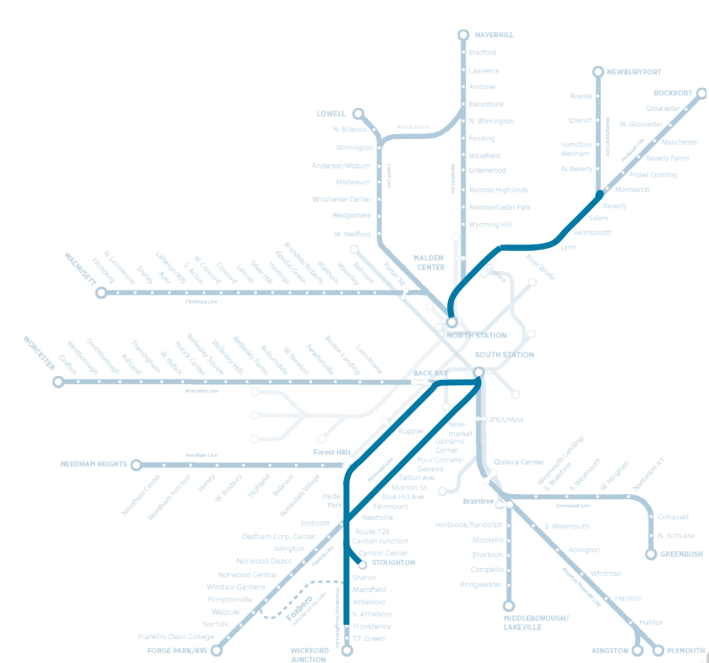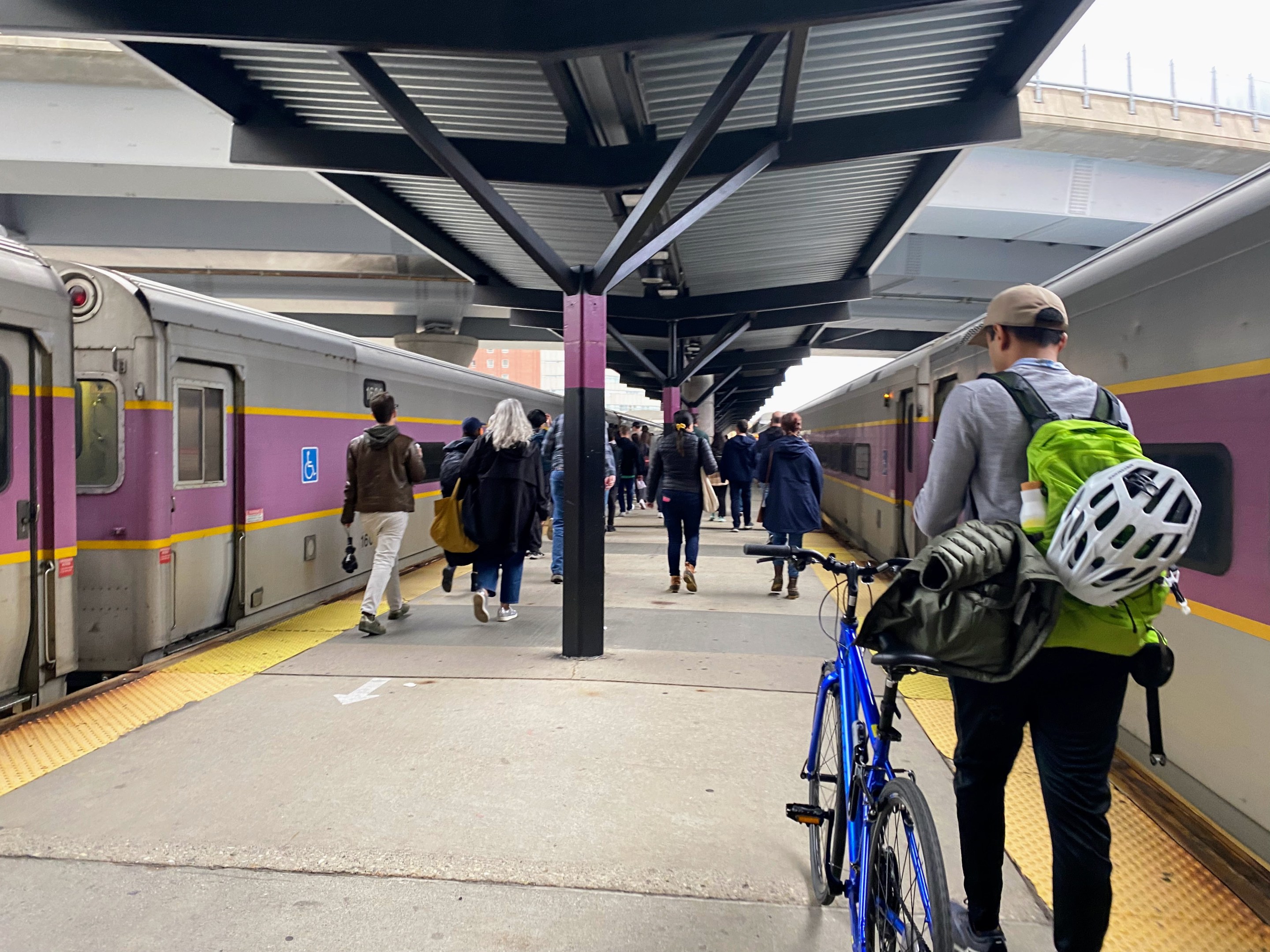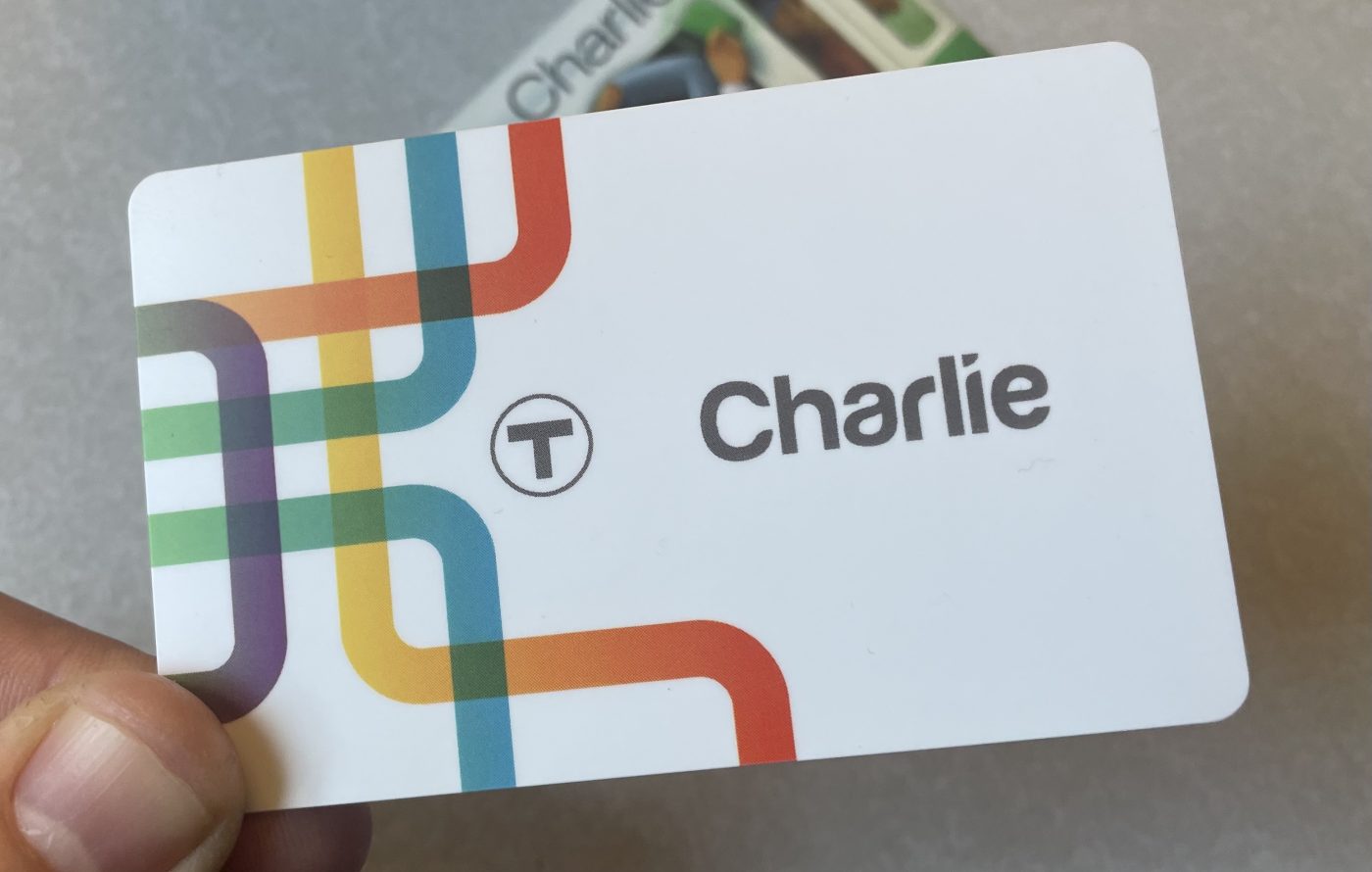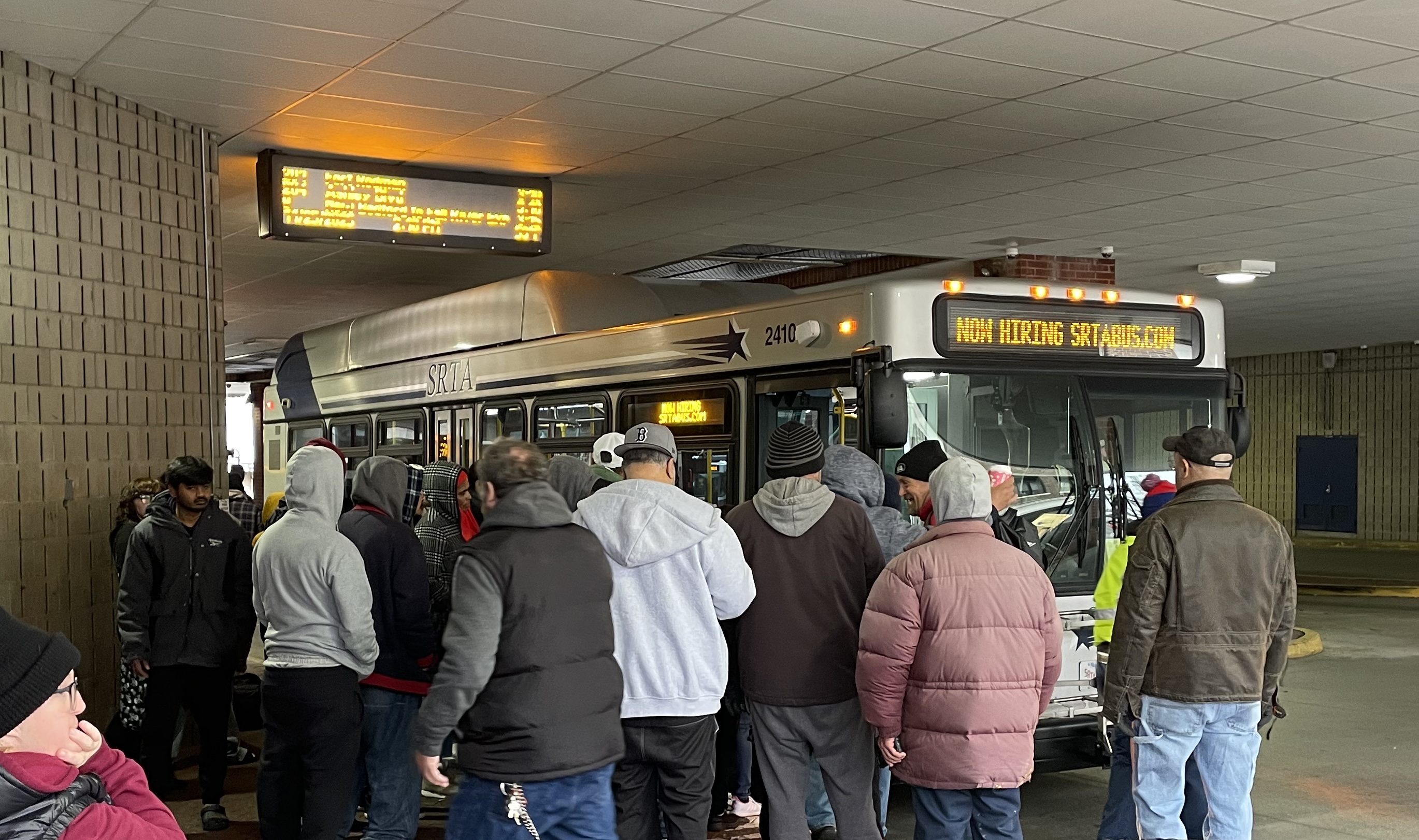
Maura Healey wants to get rid of the commuter rail as we know it.
The next Massachusetts governor promised during the campaign to move from a system named after and designed for outdated societal expectations about work to a true regional rail system, the kind that transit advocates in the state have been dreaming of for years.
Some of the changes that she envisioned during the campaign have already begun in fits and starts, with a hand forced by the pandemic and Orange Line shutdown.
But other big decisions, around electrification, frequency and fares, will face the next leadership team on Beacon Hill and at the T, where big personnel and policy changes are looming.
“The name ‘commuter rail’ has hindered our ability to maximize the potential for a regional rail system in Massachusetts,” Healey said in her campaign transportation plan. “By thinking so literally about what these rail lines are used for, presumably rush hour traffic to move people from home to 9-5 hour work and back again, we are squandering an opportunity to build a stronger and more inclusive state economy.”
She promised a transition to a “fully realized regional rail system,” albeit with a long deadline of 2040. She called for expanding rail service patterns throughout the day, boosting frequency to meet the needs of all passengers, not just 9-5 commuters.
The devil is in the details, though, and campaign promises can quickly shrivel when they have to face the harsh realities of governing: funding, logistics, and bureaucracy.
“Our commuter rail system is currently under-utilized, but it does have the potential to be a driver for economic growth across the region,” said Veena Dharmaraj, transportation director at the Massachusetts Sierra Club, in an interview with Streetsblog.
“We need to implement a regional rail system that is electrified with frequent service and affordable fares,” she said. “We need to invest in new technology, and system upgrades. We need to adequately staff the T, and establish a strong governance structure.”
Simple, right?
Frequency at the fore
When and how often the trains run is what really decides how useful the service is to its riders.
The mayor of Lynn, Jared Nicholson, has watched as residents and workers in his city have been inconvenienced and frustrated to temporarily lose the city’s one station, on the Newbury/Rockport line, which is being rebuilt by the T.
The city is part of what state legislatures and other policymakers have proposed calling an “Environmental Justice Corridor” that emphasizes convenient travel by rail.
Healey’s plan is “absolutely critical to Lynn’s future,” Nicholson said in an interview with Streetsblog.
And in his view, transforming the commuter rail most prominently requires changes to when it runs.
“We’re a working class community, going to a wide range of jobs, and having a system built around a 9-5 day just doesn’t cut it,” Nicholson said. “This is going to be a big investment, and if it’s not accessible to our residents, then it’s not a win.”
Last winter, the T started moving some commuter rail trains off of peak times to provide more frequent service during the day, aiming to better meet a changing ridership during the pandemic.
It’s a change that has been maintained even as ridership has started to creep back up. Most of the lines have moved to a bi-hourly schedule, at worst, with many now running hourly, at clockface intervals.
“At least for the foreseeable future, we’re not going to be seeing the types of peak loads that we would see pre-Covid,” said Ethan Finlan, regional rail lead for the advocacy group TransitMatters. “So it makes more sense to take the equipment we have right now and spread it around and run service more frequently.”
Transit advocates were also pleased with the increased stops added on the commuter rail to coincide with the shutdown of the Orange Line.
But those changes, Finlan noted, are “ad hoc.”
“It’s been fortunate that they’ve stuck around for so long. I don’t think we’re quite there in terms of sticking to a broader vision,” he said.
TransitMatters would like to see the frequencies come down even more, to at least hourly across the board, and in some cases, to closer to 20 or 30 minutes.
Enabling frequency with electrification
Central to those frequency goals and the overall future of the commuter rail is whether, how, and how quickly its diesel locomotives are converted to trains that run on electricity.
With electrification, which can make trains run faster and more reliably, those ideal frequencies could come down to 20 minutes in the suburbs and potential 5- to 7-minute headways in Boston’s inner core, said Dharmaraj.
“It definitely also will help us meet our climate goals while reducing impacts on environmental justice populations,” she said.
Nicholson said Lynn hears and feels the impact of today’s trains as they roll through the city.
“This is certainly an environmental justice issue,” he said. “The diesel locomotives absolutely affect not just the quality of life with the noise, but the environmental wellbeing of our community.”
The T, and Governor Charlie Baker, have pushed for a hybrid system that uses both overhead wires and battery locomotives.
Many advocates have been skeptical of that approach.
Battery technology is making some progress, but “nobody in the United States is looking at it for this type of service delivery because it’s unproven and expensive,” said Finlan.
Money problems
As ever with the T, cost is a major concern when it comes to increasing frequency and reliability, and electrification will be a major capital project, costing between $800 million and $1.5 billion according to one recent report.
Transit advocates say the T has to find a way to make it happen regardless.

“A thing that unfortunately is starting to crop up in light of all the problems that the subway system is having is this mindset that maybe electrified commuter rail would be nice to have, but we’ve got to focus on fixing the core system,” said Finlan. “It’s a false choice.”
He and others say that a transformative investment that adds to the system’s resilience, instead of the latest in a series of bandaids, is the only way to move forward. They’re calling on the legislature to step up with stable, sustainable, annual funding for the T.
It’s a legislature that will have largely the same leaders as in recent years.
One piece of policy that could bring aid is the Fair Share Amendment, the tax on high-income earners which passed in a referendum this month and could help bolster the T’s budget, depending on how the legislature allocates its revenue in next year’s budget legislation.shuffles its money around.
The Keolis question
Could the commuter rail’s future depend on who’s running it behind the scenes?
The contract for operation of the service will come to a crossroads during the Healey administration, something which the governor-elect has made clear she’s aware of.
Keolis Commuter Services, a subsidiary of French transportation company Keolis Group, has held that contract since 2014. It’s currently set to go through 2026, but as Healey alluded to in her transportation plan, the T has an option to end it early in mid-2025.
The company has touted its work to maintain and revitalize the commuter rail during that time, although it has minimal control over policy decisions which are made by the T.
Keolis says it’s maintained more than 90 percent on-time performance, and led adjustments during Covid, including the shift to an all-day clockface schedule.
Transit advocates are split on whether rebidding the contract is worth looking at.
“It’s something that the new administration should have a look at,” said Dharmaraj. “The current contract for Keolis is going to come up again in the next two years. It definitely gives us an opportunity to think through how this new system should look like and what role Keolis should play in that.”
TransitMatters’ Finlan sees it differently.
“We don’t think there necessarily needs to be a change in the operator. The operator just needs to have the capability to start advancing this transition and the interest in doing so,” he said.
“It could be somebody else. But Keolis has experience and knowledge of this type of system, so that would be a point in favor of their contract continuing. We don’t see any compelling reason why it should be ended early.”
What’s in a name?
As for whether Massachusetts should actually change the name of the service? Lynn’s Nicholson says yes.
“It’s a misnomer of what we want to have, which is a transit network that works not just for people going into town in the morning or going back in the afternoon, but a truly regional network,” he said.
Sierra Club’s Dharmaraj does too.
“The commuter rail is actually a regional system. It’s providing connection between cities that are outside the greater Boston core,” she said. “If you’re looking at building a modern transportation system that is going to provide people with access to jobs and opportunities, we also need to be looking at investing and expanding the geographic reach of our … network.”
The MBTA did not respond to a request for comment on this story.






